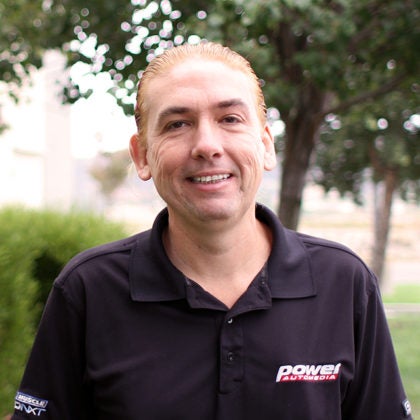Since the moment that HP Tuners revealed that it cracked the code allowing tuning of a host of modern Ford vehicles, including the 2024-and-newer Mustangs, the reaction was instant and massive. The pent-up demand for tuning had aftermarket tuners spinning dyno rollers across the country with a variety of vehicles to see what gains were possible, including Palm Beach Dyno, which recently was the first to tune a Hellion Turbo S650.
I knew that once we could bolt the Street Sleeper kit on this platform and properly tune it, records would fall. The best is yet to come! — John Urist, Hellion Turbo
“I have kind of been ignoring the S650, because I couldn’t do anything with it. Of course, we’ve installed many Whipples here at the shop, and they’ve all done great,” Ken Bjonnes, of Palm Beach Dyno, said. “Quite a while ago, I got a file from Eric Brooks (of HP Tuners) whenever the car came out, and I did a video on it, like going over the calibration, comparing it to older years. So I’ve been familiar with it.”
Palm Beach Dyno has a range of S650 Mustangs lined up for Ken Bjonnes to tune now that HP Tuners unlocked the latest Ford PCMs. Justin Burcham’s Next Gen Performance Center-backed 2024 Mustang GT, also known as “Project 24,” was the first Hellion turbocharged car to benefit from aftermarket tuning, and the results were impressive. (Photo Credit: Palm Beach Dyno)
One of the first companies to show off the fruits of that labor when the tuning was unlocked, Palm Beach Dyno began its work with Steeda’s naturally aspirated HPDE S650, known as the White Stallion, which yielded solid, reliable results.
However, the lack of custom tuning also limited the power-adder options, even though the hardware existed. A case in point is Hellion Turbo’s Street Sleeper Hidden Twin-Turbo system for the 2024-and-newer Mustang GT and Dark Horse.
“I got a call last week from Eric saying I was going to be one of three beta testers and get as many cars there as I can to test,” he added. “So, I made all the calls I could, and we’ve got probably 10 cars here right now.”
Among those cars is Justin Burcham’s Next Gen Performance Center-backed 2024 Mustang GT, also known as “Project 24.” Already pushed into the 10-second zone with bolt-on parts, it was upgraded with the Hellion system in anticipation of the tuning eventually becoming available, and Bjonnes was ready to see what this combination could do.
“There’s one thing that’s probably throwing a lot of Mustang-only tuners for a loop that luckily we’ve worked way ahead on. This is the first year that it’s a speed density Mustang GT,” Bjonnes shared. “That’s a big issue for a lot of people. Luckily for me, the GT500 went speed density in 2022, and the F-150’s been speed density since 2015. We probably have just as many or more F-150s here than we do Mustangs, so I’ve been tuning Ford speed density almost exclusively for years. So that’s helped me with the learning curve…”
This new dynamic meant building a new base file from scratch. Tuning these cars requires dancing with a complex algorithm and performing complicated mathematical equations, but Bjonnes got the hang of it in a hurry on the Steeda car. Moving to a power adder, however, meant a slight hardware change as well.
“…It requires a map sensor change, and unfortunately, on a Mustang, it’s very hidden inside,” Bjonnes said. “You have to remove the intake manifold to do that. It’s not a huge deal, but a little different than what most people are used to, where you are just using the factory mass air sensor, and you don’t have to touch it. So, just changing a map sensor, and being sure you have the proper scaling is what’s required.”
The effort in tuning and swapping the sensor was well worth it on this Hellion-turbocharged combination. Running the stock fuel system with a fuel-pump voltage booster and 93-octane fuel in the tank, it rocked the rollers with peak outputs of 783.78 horsepower and 604.59 lb-ft of torque at the rear wheels, which is all the more impressive given it was tested in July during the dog days of Florida’s hot and humid summer.
“…These numbers are good without any excuses, but we ran it in Fifth gear with drag radials because in sixth gear there’s a speed limiter that HP Tuners has not gotten around yet, so we couldn’t do a full pull in Sixth. Fifth gear is typically going to show less power, and drag radials are going to show less power,” Bjonnes explained. “But, these graphs are impressive without even pointing that out…”

On 93-octane, the Hellion Turbo Sleeper System pushed the rear-wheel output of this S650’s Gen 4 Coyote 5.0-liter V-8 to 783.78 horsepower and 604.59 lb-ft of torque. With VP Racing Fuels MS109 racing fuel in the tank, those numbers shot up to 909.43 horsepower and 702.65 lb-ft of torque. (Photo Credit: Palm Beach Dyno)
“As a comparison, a combination like this on a Gen 3 car, 700 horsepower is about the max on 93 octane,” Bjonnes added.
Swapping over to VP Racing Fuels MS109 racing fuel allowed for more aggressive tuning, and increased the output by 125.65 horsepower and 98.06 lb-ft of torque. Its peak outputs of 909.43 horsepower and 702.65 lb-ft of torque at the rear wheels were at the comfortable limits of the boosted factory fuel system. This car is destined for a fuel system upgrade, and four-digit output can’t be far behind.
“We have been awaiting the tuning for the S650 anxiously,” John Urist, of Hellion Turbo told us. “I knew that once we could bolt the Street Sleeper kit on this platform and properly tune it, records would fall. The best is yet to come!”



















